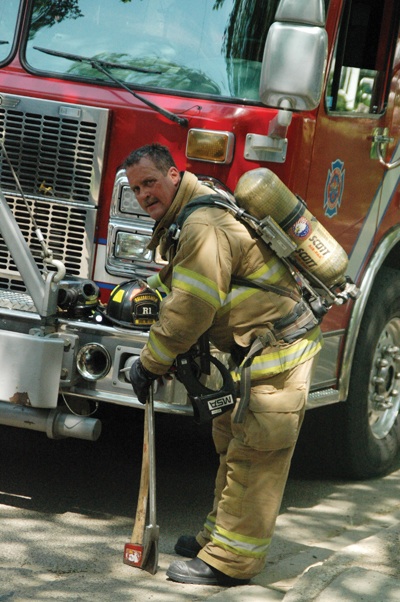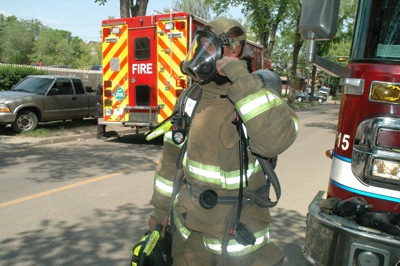
Features
Training
Trainer’s Corner: November 2010
I have been a longtime advocate of hands-on training but there are times when a review of firefighting theory is of benefit.
November 1, 2010
By Ed Brouwer
I have been a longtime advocate of hands-on training but there are times when a review of firefighting theory is of benefit. Even the best training officers can get into a rut when it comes to scheduling the training topics. You and your training program may benefit from a review to determine what information your members have retained.
Over the past decade I have formulated several reviews and generally try to use them twice a year. Below is a basic review – with the answers at the end – that I encourage you to customize for your department. Have fun with it and remember that although some of your members have been out of school for more than a few years they may still fear exams!

|
|
| Name four things you should check before you use your SCBA.
|
1. There are at least eight factors that limit duration of the air supply (SCBA). List four.
2. How may ventilation prevent a backdraft situation from occurring?
Cooling the trapped hot gases and smoke.
Releasing the trapped hot gases and smoke.
Smothering the trapped hot gases and smoke.
Interrupting the chain of the fire.
3. Before you use SCBA, name four things you should check in your pre-use inspection.
4. Name three types of tools used in forcible entry.
5. List five warning signs of backdraft that you might see from outside a building.
6. There are several classes of fire; place the correct class beside the corresponding compound.
Magnesium
Wood
Plastic
Acetylene
Overloaded electrical conductors
Propane
7. What type of fuel is the most dangerous?
a. Gaseous
b. Solid
c. Liquid
d. Viscous
8. You are the first to arrive on scene. What three things should be reported to dispatch?
9. What is a thermal layer?
10. What is the main hazard to disturbing the thermal layer?
11. What type of fuels cannot be easily extinguished by chemical flame inhibition?
a. Low flashpoint liquids and flammable gases
b. Solid fuels
c. Smoldering fuels
d. High flashpoint liquids
12. For what fire class would cooling or quenching by water or wet water foams be the most appropriate extinguishment method?
a. Class A
b. Class B
c. Class C
d. Class D
13. Name the stages of a fire and give a brief description of each.
14. What colour smoke is usually given off by liquid fuels?
a. Dense black
b. Yellow-brown
c. Pale grey
d. White
15. List the water requirement (gallons per minute) and hose size for a 25-foot by 48-foot building?
16. The wide brim on a firefighter’s helmet is designed to:
a. Vent smoke away from eyes and nose;
b. Block ultraviolet rays;
c. Protect ears and neck from hot water and embers;
d. Protect from facial burns.
17. When donning the face piece, the straps should be tightened by pulling them:
a. Outward and to the sides;
b. Simultaneously to the rear;
c. Downward and back;
d. Simultaneously to the front.
18. List five potential hazards that could be found in a vehicle fire.
19. Draw the fire triangle, label each side correctly and briefly explain its purpose.
20. What tool is an all-round tool for forcing a door?
a. Pry axe
b. Fire axe
c. Halligan tool
d. Jack all
21. How much water pressure (in psi) is lost per vertical foot of elevation gained in an elevated hose lay?
22. In MVI and forcible entry there are two laws that each firefighter should remember. What are they?
23. Define the term flashover.
24. Name two types of vehicle fire attack methods?
25. Which of the following methods of heat transfer is the major source of fire spread to exposures?
a. Conduction
b. Radiation
c. Convection
d. Induction

|
|
| When donning the face piece, the straps should be tightened by pulling them which way.
|
ANSWERS
1. Physical condition of firefighter, the degree of physical exertion, condition of apparatus, emotional stability of firefighter, cylinder pressure at start, face seal, previous experience and training, excessive talking.
2. (b) Releasing the trapped hot gases and smoke.
3. Air pressure in tank; straps extended; low pressure warning device; personal gauge matches tank pressure.
4. Prying; push-pull; cutting; striking.
5. Puffing smoke; muffled sounds; no visible flame; bulging windows; rattling windows; grey/yellow smoke; smoke-stained windows.
6. D; A; A; B; C; B.
7. (a) Gaseous.
8. Let dispatch know you are on scene / establish command / do initial size-up.
9. A collection of superheated gases.
10. Life safety.
11. (c) Smoldering fuels.
12. (a) Class A.
13. Growth, flashpoint, fully developed, post-flashpoint, decay.
14. (a) Dense black.
15. 120 gallons per minute; one 2-1/2 or two 1-1/2.
16. (c) Protect ears and neck from hot water and embers.
17. (b) Simultaneously to the rear.
18. Unknowns, plastics, fluids, air bags, ammunition, tires exploding, bumpers / air shocks / drive shaft.
19. Fuel. Heat. Oxygen.
20. (c) Halligan tool
21. 0.5 psi
22. “Try before you pry” – if one tool (method) does not work, try another.
23. Simultaneous ignition of all contents in a fire compartment.
24. Three-man team; five-man team.
25. (b) Radiation
Each question is worth four points. At the bottom of the “Just checking” sheet – (that terminology might be a little more palpable for your crews than “Review test”), I placed this scoring information.
0-25 – Gee, I hope your partner did better.
26-50 – I told you practices were important!
51-75 – Not too bad for a rookie!
76-100 – This was probably way too easy.
I let my students know they shouldn’t be too discouraged about their scores or lack thereof. I encouraged them to use this exercise to determine areas in which they need to improve!
Stay safe, and remember to train like their lives depend on it, because they do.
Ed Brouwer is the chief instructor for Canwest Fire in Osoyoos, B.C., and the training officer for West Boundary Highway Rescue. The 20-year veteran of the fire service is also a fire warden with the B.C. Ministry of Forests, a wildland interface fire suppression instructor/evaluator and a fire-service chaplain. Contact Ed at ed@thefire.ca
Print this page